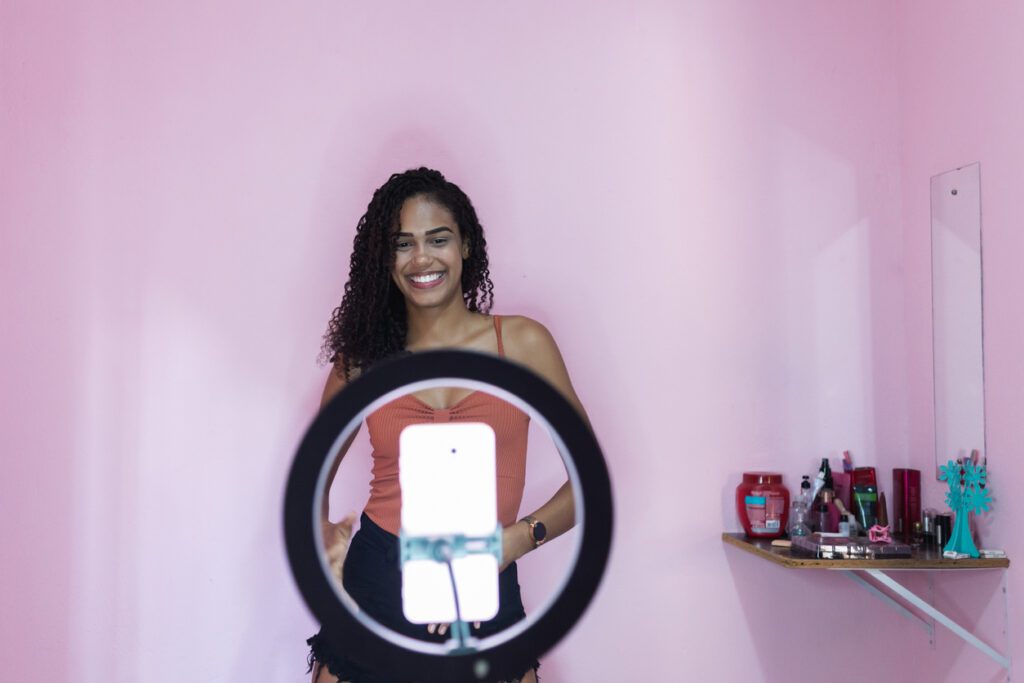What is the Deinfluencing Trend Taking Over TikTok?

If you’re regularly scrolling the beauty and influencing spaces on TikTok, Youtube, and Instagram, you may have come across some videos of users telling you what popular products they bought and found to be flopped—aka “deinfluencing.” Hot on the tail of the “duuuupe!” trend, where users were highlighting cheaper versions of popular products, the deinfluencing trend shows that consumers are looking for more intentional shopping, trying to save money, and becoming less trustworthy of Influencers.
What is Deinfluencing?
Deinfluencing is still influencing, contrary to its name. Leaders in different niches and industries are still telling consumers what to think about products, but this time rather than telling them to buy, they are warning consumers away. People who want to be influencers or be like the influencers they follow admit to having bad habits when it comes to shopping. TikTok user @valeriafrida says in her deinfluencing video, “I’m a chronic returner. If I see something go viral, I’m going to get it, and if I don’t like it, I will return it.” She then lists multiple products she was influenced to buy and her thoughts on them. This trend of sharing why something isn’t as great as it seems is deinfluencing.
Lack of trust in Influencers
Part of the reason for deinfluencing is that consumers are losing trust in the influencers. There have been many scandals across platforms, resulting in lower trust in influencers. Makeup artists are being called out for paid promotions, overhyping gifted products, and potentially faking their results. A study from The Desire Company shows that prominent influencers have overwhelmingly scorned consumers.
87% of US adults say influencers likely don’t use the products they promote.
4 in 5 consumers surveyed who purchased an influencer-recommended item had a negative experience with the product.
The Shift to Trust
Because consumers aren’t trusting the accounts that have grown to sponsorship-level success, nano-, and micro-influencers (accounts with 5k to 100k followers) are using the opportunity to be more relatable and deinfluence. They are the counter-culture to the showcase of products you have to have and instead make consumers feel good about hot products they failed to get. Fewer followers plus opinions counter to the popular narrative help reviews feel more trustworthy, and make influencers appear genuine.
Nanoinfluencer @themelaninmorgan discusses in her video how she likes the trend of deinfluencing as it battles overconsumption, highlighting the products she “can’t” be influenced to buy.
@themelaninmorgan Over consumption is real. Shopping addiction is real. #greenscreen #overconsumption #shoppingaddiction #deinfluencing
How Can Brands Get Around Deinfluencing?
Word of mouth is a huge growth tactic for any brand, with virality on social media being many brands’ dream. But if everyone is focused on deinfluencing, what can you do?
- Make sure your product really is all that. These call-outs are only happening to products that have been oversold and overpromised. If you’re working with influencers, give them truthful talking points and ensure they don’t dramatize results.
- Limit the number of influencers you work with. On BookTok, readers become suspicious of the quality of a book if fewer users are talking about it suddenly and all at once. Drawing out your campaign like bread crumbs will leave an organic feeling to the product’s success.
- Work with smaller influencers. While small accounts often have less reach, the reach and engagement they get are more trustworthy to consumers. As long as they have a reasonable engagement rate of around 3%, accounts of any size are worth considering.
- Consider if your product can factor into deinfluencing. Products and services centered around simplifying life should consider themselves a deinfluencing tool. For example, clothing recycling brand For Days can suggest people deinfluencing their closets by utilizing their Take Back Bags. Press-on nail designers should take advantage of the health concerns around the highly popularized DIY gel-curing manicures and market their products as a safe alternative. If your product can be positioned opposite a trend, it could be part of deinfluencing.
Want Help with Your Influencer Campaign?
When you run a business, you may not have the time to put all of this advice into practice, monitor and understand the conversations around influencers. That’s where Online Optimism comes in. Our social media team understands the ins and outs of influencers. Learn more about our social media services, and contact us to get started today!
